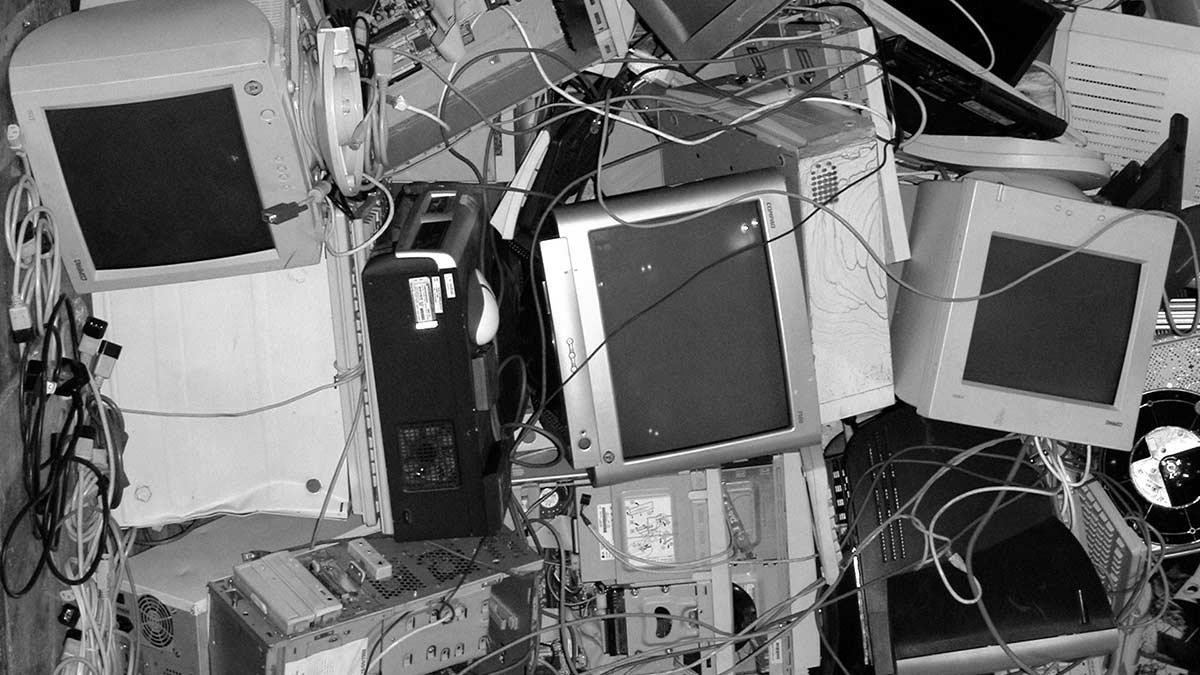A few years before Steve Jobs passed away, he theorized in an interview that society is on the verge of living in a post-PC era.
In the interview below, he likens it to the way consumers used to purchase automobiles. Back around the turn of the early twentieth century, America was transforming itself from an agricultural/agrarian based culture into one of industrialization. But during that transformation, when many people still lived a farming or agricultural lifestyle, the most common type of vehicle purchased at the time were trucks.
Why trucks?
Trucks are utilitarian. You can transport large items in the truck bed, or hitch up a trailer to haul large livestock or horses or cattle behind it. Then, and now, farmers use them to haul grain, livestock feed, equipment, and other items that would be difficult or impossible to haul around in regular sedans.
Farmers, construction workers, carpenters, utility workers and basically anyone else who works in a profession that requires a vehicle to help them haul heavy equipment, supplies, or livestock continue to use trucks because they serve the utilitarian purpose of helping them do their jobs.
But these days, the majority of consumers don’t purchase trucks. They purchase cars or SUVs, which don’t serve the same purpose as trucks.
And what Steve Jobs postulated was that traditional desktop personal computers will, sooner or later, be similar to the way consumers purchase and use trucks. Sure, there are lots of people who drive trucks to this day, but they are far dwarfed by cars and SUVs.
When Steve Jobs made that comment, Steve Ballmer, the CEO of Microsoft at the time, rejected Steve’s prediction about the future of the personal desktop computer. After all, Microsoft owes its very existence to the popularity and success of personal computers.
Should that ever change, Microsoft’s massive fortunes and future revenue will be in direct jeopardy. And unless they change their thinking and accept this new reality, they could end up going the way of the dodo bird.
It’s helpful to get a basic understanding of the historical context of personal computers to get a better understanding of where the Post-PC era may be taking us.
The PC Revolution
It’s hard to imagine nowadays, but the introduction of the personal computer was groundbreaking in so many ways.
When we say “personal” computers, we take the phrase for granted. We often don’t even realize the significance of what it was like before the dawn of the personal computer revolution.
Before the introduction of personal computers, most people only knew about computers from science fiction movies and television shows. Computers were giant, behemoth monstrosities that literally took up entire floors of buildings and required industrial strength HVAC air conditioning equipment to keep them cool enough to function properly.
They were also hideously expensive. We’re talking millions of dollars to purchase them, not to mention the army of technical staff and programmers needed to keep those bulky mainframe computers up and running.
So it was really only big government agencies, the military and major corporations who could afford to purchase and pay for the upkeep of these systems.
They weren’t easy to write software applications for either. Today, we’re positively spoiled for choice of programming languages and development tools. Programming languages have continually evolved and improved over time. They are much more like the way we humans can understand languages, more than the native and incomprehensible native machine language that computers can actually interpret and execute.
The computers back then were used to help the military, government or big corporations. They were never intended for personal use by everyday people.
And then Steve Jobs and Steve Wozniak introduced the world’s first commercially successful personal computer.
It was a computer that didn’t take up whole floors of buildings. It was small enough that it could comfortably sit on anyone’s desktop … hence the term, “desktop computer”.
It might not have been anywhere near as powerful as a mainframe computer, but hey, it was powerful enough to do useful things like word processing, crunching numbers on a spreadsheet and many other tasks that could be done much faster and more efficiently than without a computer.
And for some three decades after the dawn of the personal computer revolution, the PC rose to dominance and made fortunes for any company that served its existence. Intel provided the CPU processors for desktop computers and Microsoft made the operating system and productivity software like Office.
But two other major technology revolutions happened which heralded the end of the PC era:
1. The Rise of the Internet
The internet made two things possible. One, every computer on the planet could reach any other computer on the planet if they were both connected to the internet network. Secondly, the web browser suddenly made the operating system and native software applications not so important anymore.
With HTML and knowledge of some server-side programming language that you deployed to a web server, you could use a web browser and build an entire web-based application just as rich and sophisticated as software you traditionally had to manually install to your computer.
And it didn’t matter what underlying operating system your computer ran on… Linux, Windows, Mac, it really didn’t matter as long as the OS could run a modern web browser application.
And ever since the rise of the internet, it has worried companies like Microsoft, to no end, even to this day. Why? Because as previously mentioned, the manually installed operating system and native-based software applications are no longer necessary when you have the internet and a web browser at your disposal.
Which means you don’t necessarily need to purchase Windows and Office software to make a computer useful.
Microsoft’s main software competitor, Google, aims to disrupt Microsoft’s core product strategy by giving consumers an alternate path to run software. As long as your computer has connectivity to the internet and a capable web browser, you can do your word processing, spreadsheet, presentations, e-mail, video browsing, music browsing, social media, and pretty much any other major kind of software application in existence, via your web browser.
2. The Introduction of the iPhone
The second major revolution was when Apple introduced the iPhone in 2007. The iPhone suddenly made the desktop PC a secondary device. Apple’s iPhone gave every consumer a supercomputer in their pocket. You were no longer tied to a desktop computer for your personal computer needs.
You could suddenly do everything you could on a full-size desktop computer just as easily on Apple’s smartphone device. Later, when they released their tablet device, the iPad, you had the advantage of a bigger screen, yet still more portable than a traditional laptop computer.
The computer benchmarks for the latest and greatest smartphones and tablet devices are literally reaching near parity with full-size desktop computers.
We’re getting to the point where smartphones and tablets are equipped with just as much RAM, disk space and CPU performance as the traditional PCs.
All recent evidence seems to point to the fact that most people can accomplish most of their computing needs with post-PC devices like smartphones and tablets.
The true “smoke test” will be whether corporations and government agencies will embrace the same post-PC world.
We’re starting to see companies introduce technology that allows office and corporate employees use post-PC devices in the workplace as well.
Microsoft introduced a smartphone technology called “Continuum” that allowed their (now defunct) smartphones to hook up to an external monitor and keyboard and convert into a full-fledged computer device they can use at work. Google is introducing similar computing technology to their Android-branded smartphones and tablet devices as well.
I have no doubt Apple is aware of these recent computing trends. I wouldn’t be surprised if, down the road, they introduce their own unique flavor of technology that allows you to take your iPhone or iPad to the workplace and enjoy a similar experience.
The one killer feature that could truly convince corporations and employees to embrace post-PC devices in the workplace, is to make your smartphone or tablet wirelessly connect to any external keyboard and monitor(s) with no external cabling or connectors to worry about. You could literally bring your smartphone or tablet to work, sit at ANY workstation and your post-PC device will seamlessly connect to external peripherals instantly, no fuss no muss.
We’re not quite there, but the progress of technology practically guarantees this will happen, at least from a technology perspective.
We are truly living in exciting times.




